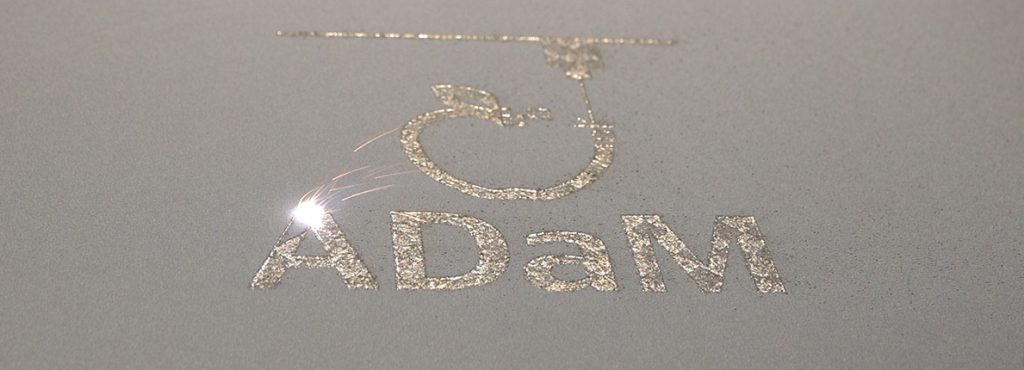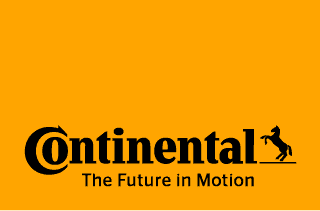Additive Design and Manufacturing (ADaM)

As an independent series provider, we can realize parts with complex shapes and bionic structures. We develop, simulate, produce, and validate parts according to the highest automotive quality standards
In the Competence Center for Additive Design and Manufacturing (ADaM), we offer development and optimization of any structure from the concept phase to the finished product – both for samples and series applications.
Each additively manufactured part goes through three process steps:
Our Additive Engineering team conducts an in-depth analysis of customers’ requirements and desired materials to create a bionic design and optimize product structures.
The analysis results are passed along to the Additive Production center, where custom-fit reworking takes place based on individual requirements. At this stage, the surface finish is optimized using our comprehensive portfolio of technologies.
As the additive manufacturing process approaches its final steps, the finished products are put through a set of strict criteria in our Quality Management Center to ensure the highest quality standards are met.
If required, we can also perform a complete validation of the printed parts. Our activities go from CT-scan, vibration, humidity tests up to vibration or lifetime-tests, and everything in between.

Selective Laser Melting: SLM is a laser-based layering process in which metal powder is completely melted and then solidified. Following the 3D printing process, the part is removed from the building platform with an eroding machine. Then, the removal of the support structures and the sandblasting of the component takes place. In the final step, all functional surfaces and fitting dimensions are conventionally reworked.
Selective Laser Sintering: The basic material for SLS is a powdery polymer. Depending on the application and customer requirements, we use PA12, PA6, or PA11. The powdery material is heated and melted by local sintering with a laser beam. Due to the compacted powder, the components can be manufactured without support structures. In addition, complicated geometries can also be brought about, which is nearly impossible to realize using conventional methods.
Stereolithography: The SLA processed synthetic resins are solidified layer-by-layer with the aid of a laser. The basic material for stereolithography is a liquid photopolymer, which can be activated by UV exposure. The manufactured component is removed and dripped off before it is washed off using a solvent. Afterward, the support structures which are required for production are removed. Finally, the surface is reworked, and the component is cured under UV light. It is self-evident that our SLA technology is suitable for complex geometries.
Fused Deposition Modeling: This process allows production with several materials such as ABS, PC, ABSESD, FDM-Nylon, and ULTEM – a plastic with excellent mechanical and electrical properties. Through the heating and application of thermoplastic filament, there can be an immediate solidification of the applied material. The finished components can be used without reworking. Only the process-related supporting structures must be removed.
Digital Light Processing: DLP technology is similar to SLA. Both are variations of vat polymerization – a liquid photopolymer resin which can be cured with light. In the case of DLP, a projector serves as the light source to expose the bottom of a material reservoir. Different layers are built one after the other on a platform and are to be drawn out of the liquid afterward. DLP technology ensures both speed and accuracy in producing parts with special materials.
Vacuum Casting: The prerequisite to the production of a vacuum casting is a prototype created using the SLA process. This prototype serves as the starting model for the silicone mold. The prototype is fixed in a frame, which is filled with silicone rubber. This creates a silicone tool. The mold is closed again and filled under vacuum with liquid polyurethane. Insert parts can be integrated; thus complex multi-component parts can be produced. Up to 20 castings can be produced from a single mold.
ADaM Example Projects

Brake Caliper – Road Approved! Additive-made components, such as the brake caliper shown here, are in our additive manufacturing portfolio. The caliper passes through several manufacturing steps during production. First, a CAD model is created, which afterward is transferred into an STL input (CAD data) for the 3D printer. The caliper is additively manufactured by using the SLM process. [Link to Selective Laser Melting Box] Afterwards, the brake caliper shown was validated in our measurement laboratory and is the first additive Conti brake caliper with road approval.

Blister Trays – AdaM solutions for electronic transportation: Packaging for electronic components is particularly vulnerable during transport due to electrostatic discharge (ESD). The Karben Competence Center for Additive Manufacturing (ADaM) employs a new 3D-printing-based thermoforming process to produce blisters. [LINK TO INDUSTRIAL RADAR SENSOR PAGE] In order to assure product quality and delivery speed, our central electronic plant has already adopted blister trays for products like circuit boards, order systems, and packaging.

Classic Cars – ADaM solutions for the short supply of old-timer spare parts: With our 3D printing technologies, we have the capability to produce not only common car parts but also extremely rare ones. The dilemma of enhancing product quality or retaining original designs is also perfectly mediated using our ADaM technologies. As the quality of our additive manufacturing continues to improve with generally decreasing costs, this represents an economic alternative for conventional production in small quantities. All parts that are produced using this process meet the requirements in terms of absolute fidelity to the original specifications – both from a technical and a visual perspective.
Direct Contact
Tel: +49 69 6039 981 541
Email:
We offer our customers complete (series) product solutions from a single source, including development, production, and testing. Our DNA is a can-do spirit that always welcomes a challenge.
Would you like more information?
Relevant Links

Samples & Mechanical Solutions
Imagine, you could build anything: In the CES product solutions business center „Samples & Mechanical Solutions“, we make this possible. Since more than 40 years, we follow a very simple philosophy: We find solutions for our customers!

Manufacturing & Small Series
We provide customer-specific product solutions: from manufacturing of prototypes and samples to fully-tested small series parts – we offer all competencies.

Electronics
We assemble demanding and complex printed circuit boards for prototypes to small series. Our portfolio includes, among other things, complete coordination and handling before, during and after PCB assembly, including component procurement.


